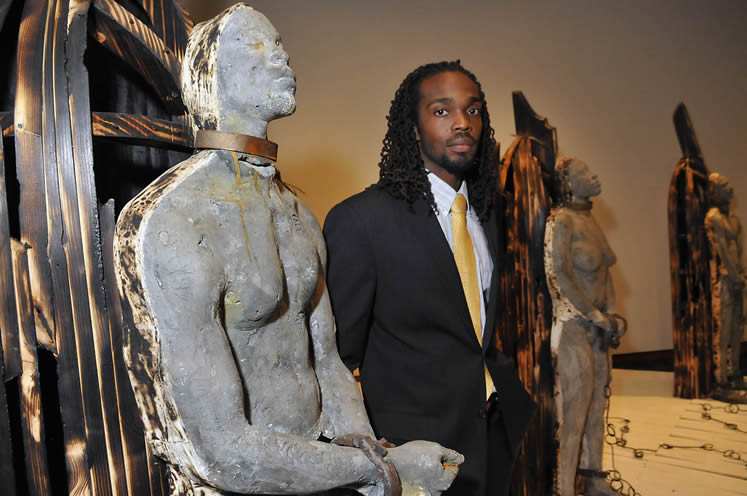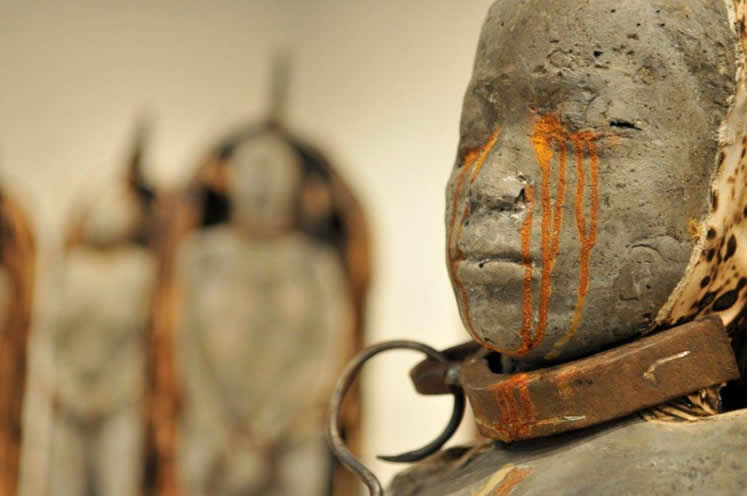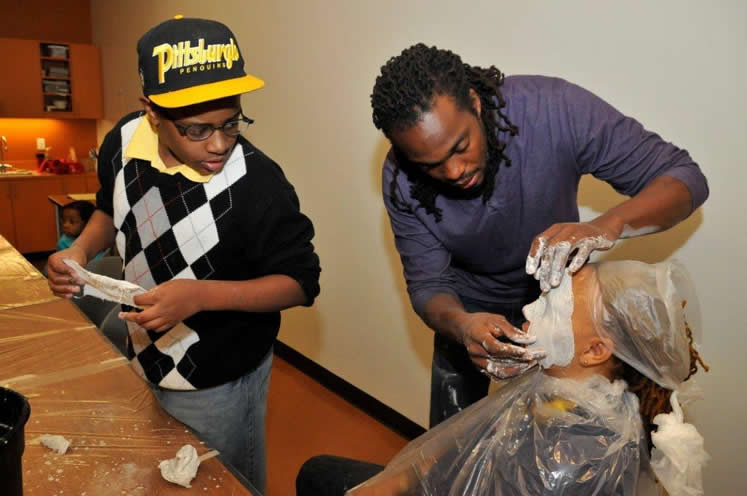CASH CROP Viewers confront slave trading past at Charlotte's Gantt Center
In a printmaking class, Stephen Hayes encountered an image of a slave ship diagram. Thus began a process that would eventually lead to his installation, Cash Crop. Coupled with a predisposition for three-dimensional objects which began in his youth – his parents would bring him old machine and computer parts — the work of this young artist suggests a creative mind that has a unique insight into the emotional holds of people. Cash Crop, now on view at the Harvey B. Gantt Center for African-American Arts + Culture, invites viewers to walk into an emotional and physical and psychic space to confront the past, present, and future. 'Cash Crop' is an artistic rendering of the slave trade's grim reality. This ambitious project by Stephen Hayes, a young artist living in Atlanta, combines a sweeping array of materials and techniques with a muted palette to depict the suffering and humiliation of the trans-Atlantic slave trade. By extension, it also addresses the human toll resulting from our current dependence on sweatshop labor. The central motif of Cash Crop is a chilling slave ship diagram that depicts how slaves were crowded on ships to ensure maximum profit. This diagram appears in various forms throughout the show. |
|---|
|
|
Fifteen manacled figures, representing the 15 million people who were brought to the Americas on slave ships, are connected by chains to a replica of the Great Seal of the United States that has been carved into a shipping pallet. The figures and pallet are arrayed on a ship's floor that bears a carving of a world map. To fully experience this installation, it is essential to walk into it and be surrounded by the figures. Each one is lashed to its own small ship, which has the ubiquitous diagram carved into it. These individuals bear facial expressions that are compelling in their ambiguity: They could be praying or grimacing. Even though the figures are cast in concrete, they appear to be breathing. The intensity is so great that it overshadows the other works in the show. However, all of them merit serious consideration and can stand on their own. While the central image in "The Passage" is the slave ship diagram superimposed on a map, it is the imagery on the large picture frame that seems to be the actual subject of this piece. If you don't look closely enough, you might think the meticulously carved and burned frame is filled with mere decorative marks or embellishments; but instead, it is crammed with shackled figures. This appears to be intentional, in that it mirrors the anonymity and dehumanization of people sold into slavery. The exhibit catalog includes an essay by Cheryl Finley, an art history faculty member at Cornell University, that details how Hayes approached this project thematically and technically, discusses the 1789 slave ship engraving that inspired his work and examines his work in the context of other artists who have used what Finley calls the "slave ship icon" to examine this shameful period of American history. This article was created as part of the Charlotte Arts Journalism Alliance. Courtesy Charlotte Observer. |
|---|
|
|---|
|
|---|


